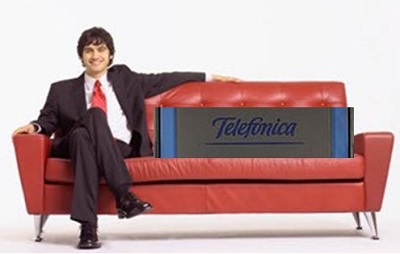The telecom giant has now announced the creation of its new business called Axonix.
Telefónica has now unveiled its new Axonix company, which is a mobile marketing firm that has been developed through the financial backing of the telecom company itself, in addition to the affiliates of the GSO Capital Partners of Blackstone.
The company made the announcement of its new business by way of a recent press release.
That press release showed that Axonix is the very first mobile marketing exchange program that the operator has ever created and operated. Now, Telefónica and Blackstone’s GSO capital will be using this tech to help to carve out a new sector for itself. The release also explained that MobClix would be the technology that would be used for powering Axonix.
The analytics tool from MobClix will ensure that the mobile marketing will be measurable.
The MobClix tool is designed to be used for mobile apps. This is vital to being able to track and analyze the success of specific ads or of larger campaigns.
Telefónica’s current director of global advertising sales, Simon Birkenhead, has now been appointed as the Axonix chief executive, so he will soon be leaving his present role in order to move into the new one. The newly created company will have its own entirely new team of executive management. It will have global operations that will be headquartered in London.
Although Axonix will be a business that is run independently from Telefónica, the mobile operator said that the company will still be able to take advantage of the existing advertising industry expertise, its financial credibility, as well as the worldwide reach of the two shareholders behind it.
The Telefónica CEO of digital service and innovation, Stephen Shurrock, explained that “Axonix is created specifically for the mobile advertising industry, using technology with a four-year heritage in leading this market to offer a central destination for operator-enriched advertising inventory.” He also stated that the company is proud to be the first company of its kind to both own and power an exchange platform for mobile marketing. Shurrock feels that this is a clear demonstration of the company’s dedication to placing the spotlight on digital services as they convert themselves into a digital telecom.
The most recent data report issued by ABI Research sees this technology exploding in 2014.
The latest quarterly market data report from ABI Research has placed a focus on location based marketing technologies and has shown that this year will likely be a powerful one when it comes to indoor installations within retail environments.
The report explains it as a full scale deployment of what early adopters were testing last year.
Now that the last three years have seen considerable testing of location based marketing techniques and technologies by early adopters, they are ready to roll out complete campaigns that will make use of the channel. An additional critical driver in this area is also the rapid increase in the popularity of BLE/iBeacons.
Those forms of location based marketing technology are generating a new wave of adopters in this space.
Now, second generation startups are beginning to drive brand new growth and will be used throughout each of the major verticals. When all is said and done, the report showed that this year will see more than 30,000 indoor location installations, said ABI Research’s data.
Patrick Connolly, a senior analyst with the firm, said that it is easy to spot the way in which large pharmacy and grocery chains have been moving toward this tech. He also added that “These are very competitive verticals, which can benefit significantly from identifying and targeting loyal customers.” Connolly explained that “Both already have large loyalty and advertising/offers deals in place and from a practical point of view, in-store items can be difficult to find. All of this makes indoor location a perfect fit.”
Beyond that, the development of the technology throughout other verticals will be an interesting occurrence over the next few months. For instance, while QSR restaurants had not originally been seen as a prime example of the type of business that would be able to take full advantage of this technology, it is in this area that there have been some of the largest successes.
Some of the differences that location based marketing and tech have been able to achieve for fast food restaurants include a small improvement in the length of lineups. This may sound minor, but in a business of that nature, it can translate to millions of dollars over time.



